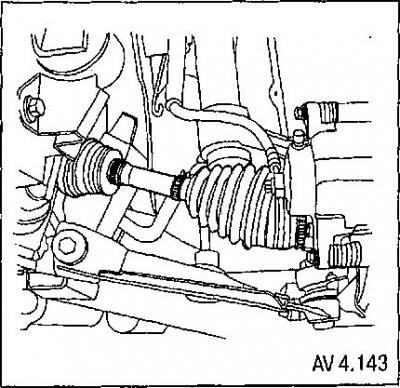General description
Drive shafts are the elements of transmission of torque to the front wheels, which allow the wheel to move freely within the allowable suspension movements and turn around the wheel's axis of rotation when steering. At the same time, the torque is transmitted smoothly, without jerks. This is facilitated by the use of special hinges of equal angular velocities (SHRUS). A feature of such hinges, unlike universal joints, is the equality of the angular velocities of the input and output link of the hinge at any angular position of the hinge links.
The inner CV joint of the drive shaft has an angular and an axial degree of freedom. The outer CV joint has only an angular degree of freedom.
The connection of the ends of the drive shaft with the main gear gears and with the hub is made using splines.
On vehicles with automatic transmission, different types of CV joints are used. The outer CV joint is of ball type, the inner one is of three-stud type.
On cars with manual transmission, CV joints of the same type are used, but of different shapes. These CV joints are ball type joints.


1. Ball joint of equal angular velocities (SHRUS) complete (Rzeppa type); 2. hub shaft; 3, 5, 7, 9. Cover collar; 4. Cover of the outer hinge of the drive 10. Housing of the inner hinge equal to the shaft; angular velocities of the three-spike type; 6. Drive shaft; 11. Retaining ring; 8. Cover of the internal hinge of the drive 12. Internal hinge of equal angular shaft; speeds of the three-spike type.

1. Drive shaft fastening nut; 2. Outer CV joint; 3. Drive shaft; 4, 6, 7, 9. Cover clamp; 5. Case outer CV joint; B. Cover of the inner CV joint; 10. Retaining ring; 11. SHRUS with transverse groove (internal ball type); 12. Retaining ring.
